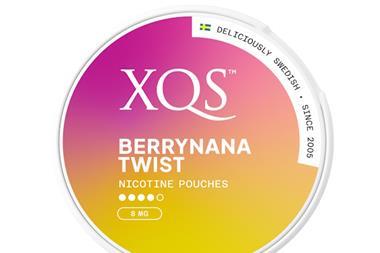Ahead of next week’s White Paper, what should we read into the health secretary’s remarks about plain tobacco packs? Simon Mowbray reports
"We support measures to reduce smoking, especially among young people, but there's little evidence that the government's proposal will work."
That was Andrew Lansley one year ago, speaking as shadow health secretary on the former government's plans to introduce a ban on displaying tobacco products in stores. He went on: "If the government were serious about tackling problems associated with tobacco, they would address black market sales and nicotine addiction."
It is, therefore, not difficult to understand the industry's confusion after Lansley, now secretary of state for health, revealed at the weekend that the new government was considering forcing tobacco companies to package their cigarettes in plain brown wrappers in a bid to deglamorise smoking and stop young people taking it up.
This news will have come as a surprise for two reasons. First, Lansley and his colleagues had been seen by the industry as likely to overturn the impending display ban or at least water it down when the contents of the long-awaited White Paper on public health are finally unveiled next week.
Second, because the Conservatives were very clear in their opposition to plain packets when the previous administration undertook a consultation on the very same idea.
So what's going on? The conspiracy theorists are already out in force. The majority view among public affairs experts is that Lansley's latest pronouncement selectively given to an upmarket left-wing newspaper and a downmarket right-wing red-top was delivered merely as a sop to the health lobby that has been beating a path to his door to bend his ear about the need for a display ban.
Another view is that Lansley used the interviews with the two Sunday newspapers as a litmus test to gauge opinion over the packaging proposal in the knowledge that, when you finally get into government, doing nothing to tackle public concerns over tobacco is no longer an option.
If the latter scenario was indeed intended to carry the desired effect, then Lansley must be delighted with the volume if not necessarily all of the content of the feedback so far.
The health lobby have been positively drooling over their dream double-whammy prospect of brown paper fag packets tucked out of sight below shop counters; while tobacco manufacturers have been incandescent with rage. Both Imperial Tobacco and British American Tobacco wasted no time in threatening legal action against the government if it dared to damage their intellectual property, or brands, as they are more commonly known, with such a measure.
"We are a legal company selling a legal product," says a BAT spokesman, while other manufacturers have also been clambering to deliver pronouncements on how the packaging proposals would lead to unintended consequences such as an increase in counterfeit products being smuggled into the UK, and pointing out that cheap tobacco products would be likely to become more accessible to children.
That, they said, would hardly be a great result for the government when counterfeiting was already estimated to be costing it up to £4bn a year in lost revenues as about 21% of cigarettes smoked in the UK do not have duty paid on them.
Such an outcome would also seem to go completely against Lansley's previously aired concerns over the need for government to "address black market sales".
And there are also concerns that the introduction of plain packaging on tobacco could also be the thin end of the wedge for food and drink manufacturers.
A Department of Health consultation document read: "The introduction of plain packaging may set a precedent for the plain packaging of other consumer products that may be damaging to health, such as fast food or alcohol."
What Lansley did not make clear was whether removing branding from tobacco products would be on top of or in lieu of a display ban. Should it be the latter, Lansley may be cleverly looking to drive a wedge between retailers and manufacturers, as doing so could potentially have a bigger impact on manufacturers than retailers.
As one convenience retailer speaking on behalf of the Tobacco Retailers Alliance puts it: "Obviously, plain packaging would make counterfeiting even easier than it currently is, and activities such as stock-taking would be very difficult if all the products looked identical. But a display ban would finish our business off, and anything has to be better than that.
"At this stage we don't know much about the government's plans for plain packaging, but we welcome any indication that the government is finally dropping its ludicrous plans to force us to sell tobacco from out of sight."
However, even if this was Lansley's intention, he is still going to face retailer and wholesaler opposition. "We believe plain packaging would actually significantly harm retailers, particularly in terms of making it harder to serve customers, and the disruption they would have," says Shane Brennan, public affairs director at the ACS.
"As well as making life easier for counterfeiters, there is the question of whether premium brands would lose their point of difference over discount brands, so they may no longer be able to command such a premium, which would be interesting from a health point of view if the government is trying to discourage smoking."
But, as one industry source puts it: "It looks like Lansley is flying a kite to see what the reaction is, and then make further announcements based on what happens."
Another adds: "The plain packaging idea is a clear sop to the health lobby. We shall be watching developments with interest."
Countdown to the display ban
DECEMBER 2008: Government announces plans to ban tobacco displays in shops in England and Wales as part of a crackdown on youth smoking
JANUARY 2009: JTI says the ban would shut 15,000 small shops and leave 75,000 people unemployed; government publishes its Health Bill
FEBRUARY 2009: Conservative shadow health minister Mike Penning attacks the Health Bill
JUNE 2009: Major tobacco manufacturers say they won't foot the bill for changes to gantries in the case of a total ban
JULY 2009: Ireland introduces its tobacco display ban; retailers soon report drops in sales as the black market prospers
NOVEMBER 2009: Penning hints that a Conservative government would revisit the issue of the display ban
AUGUST 2010: The coalition government can't reach a decision over the ban, with a decision expected later in the year
NOVEMBER 2010: Still awaiting a decision, supporters and opponents of the ban are surprised when health secretary Andrew Lansley tells journalists he may introduce plain brown packaging for all tobacco to make smoking less glamorous
DECEMBER 2010?: Health White Paper to be published next week
Health secretary Andrew Lansley will be the keynote speaker at The Grocer's health conference on 2 February next year. For more information contact Karen Beston on 01293 610279, or to book tickets call 01293 610324.
"We support measures to reduce smoking, especially among young people, but there's little evidence that the government's proposal will work."
That was Andrew Lansley one year ago, speaking as shadow health secretary on the former government's plans to introduce a ban on displaying tobacco products in stores. He went on: "If the government were serious about tackling problems associated with tobacco, they would address black market sales and nicotine addiction."
It is, therefore, not difficult to understand the industry's confusion after Lansley, now secretary of state for health, revealed at the weekend that the new government was considering forcing tobacco companies to package their cigarettes in plain brown wrappers in a bid to deglamorise smoking and stop young people taking it up.
This news will have come as a surprise for two reasons. First, Lansley and his colleagues had been seen by the industry as likely to overturn the impending display ban or at least water it down when the contents of the long-awaited White Paper on public health are finally unveiled next week.
Second, because the Conservatives were very clear in their opposition to plain packets when the previous administration undertook a consultation on the very same idea.
So what's going on? The conspiracy theorists are already out in force. The majority view among public affairs experts is that Lansley's latest pronouncement selectively given to an upmarket left-wing newspaper and a downmarket right-wing red-top was delivered merely as a sop to the health lobby that has been beating a path to his door to bend his ear about the need for a display ban.
Another view is that Lansley used the interviews with the two Sunday newspapers as a litmus test to gauge opinion over the packaging proposal in the knowledge that, when you finally get into government, doing nothing to tackle public concerns over tobacco is no longer an option.
If the latter scenario was indeed intended to carry the desired effect, then Lansley must be delighted with the volume if not necessarily all of the content of the feedback so far.
The health lobby have been positively drooling over their dream double-whammy prospect of brown paper fag packets tucked out of sight below shop counters; while tobacco manufacturers have been incandescent with rage. Both Imperial Tobacco and British American Tobacco wasted no time in threatening legal action against the government if it dared to damage their intellectual property, or brands, as they are more commonly known, with such a measure.
"We are a legal company selling a legal product," says a BAT spokesman, while other manufacturers have also been clambering to deliver pronouncements on how the packaging proposals would lead to unintended consequences such as an increase in counterfeit products being smuggled into the UK, and pointing out that cheap tobacco products would be likely to become more accessible to children.
That, they said, would hardly be a great result for the government when counterfeiting was already estimated to be costing it up to £4bn a year in lost revenues as about 21% of cigarettes smoked in the UK do not have duty paid on them.
Such an outcome would also seem to go completely against Lansley's previously aired concerns over the need for government to "address black market sales".
And there are also concerns that the introduction of plain packaging on tobacco could also be the thin end of the wedge for food and drink manufacturers.
A Department of Health consultation document read: "The introduction of plain packaging may set a precedent for the plain packaging of other consumer products that may be damaging to health, such as fast food or alcohol."
What Lansley did not make clear was whether removing branding from tobacco products would be on top of or in lieu of a display ban. Should it be the latter, Lansley may be cleverly looking to drive a wedge between retailers and manufacturers, as doing so could potentially have a bigger impact on manufacturers than retailers.
As one convenience retailer speaking on behalf of the Tobacco Retailers Alliance puts it: "Obviously, plain packaging would make counterfeiting even easier than it currently is, and activities such as stock-taking would be very difficult if all the products looked identical. But a display ban would finish our business off, and anything has to be better than that.
"At this stage we don't know much about the government's plans for plain packaging, but we welcome any indication that the government is finally dropping its ludicrous plans to force us to sell tobacco from out of sight."
However, even if this was Lansley's intention, he is still going to face retailer and wholesaler opposition. "We believe plain packaging would actually significantly harm retailers, particularly in terms of making it harder to serve customers, and the disruption they would have," says Shane Brennan, public affairs director at the ACS.
"As well as making life easier for counterfeiters, there is the question of whether premium brands would lose their point of difference over discount brands, so they may no longer be able to command such a premium, which would be interesting from a health point of view if the government is trying to discourage smoking."
But, as one industry source puts it: "It looks like Lansley is flying a kite to see what the reaction is, and then make further announcements based on what happens."
Another adds: "The plain packaging idea is a clear sop to the health lobby. We shall be watching developments with interest."
Countdown to the display ban
DECEMBER 2008: Government announces plans to ban tobacco displays in shops in England and Wales as part of a crackdown on youth smoking
JANUARY 2009: JTI says the ban would shut 15,000 small shops and leave 75,000 people unemployed; government publishes its Health Bill
FEBRUARY 2009: Conservative shadow health minister Mike Penning attacks the Health Bill
JUNE 2009: Major tobacco manufacturers say they won't foot the bill for changes to gantries in the case of a total ban
JULY 2009: Ireland introduces its tobacco display ban; retailers soon report drops in sales as the black market prospers
NOVEMBER 2009: Penning hints that a Conservative government would revisit the issue of the display ban
AUGUST 2010: The coalition government can't reach a decision over the ban, with a decision expected later in the year
NOVEMBER 2010: Still awaiting a decision, supporters and opponents of the ban are surprised when health secretary Andrew Lansley tells journalists he may introduce plain brown packaging for all tobacco to make smoking less glamorous
DECEMBER 2010?: Health White Paper to be published next week
Health secretary Andrew Lansley will be the keynote speaker at The Grocer's health conference on 2 February next year. For more information contact Karen Beston on 01293 610279, or to book tickets call 01293 610324.

















No comments yet